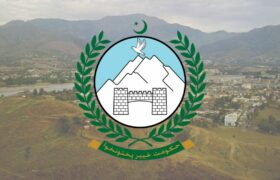Pakistani masses are protesting against electricity bills for the month of August 2023 due to the high cost of electricity in the country. On average, a household of middle class Pakistan has to pay 3 times for electricity compared to what it paid in July 2023, jut a month back.
The government has raised electricity prices to match growing circular debt in energy sector, even as the country grapples with its highest inflation in over a decade. This is crisis is a self-inflicted wound by successive governments who for political benefits completed expensive imported fuel based energy production while ignoring nature’s gifted hydropower production potential.
The increase in electricity tariffs has affected the citizens, and they are protesting against it. What are the core reasons behind Pakistan’s energy crisis? Pakistan’s energy crisis stems from a fuel mix transformation initiated two decades ago when power generation shifted from oil to gas.
The electricity grid, established prior to Pakistan’s 1947 independence and largely constructed in the 1960s, is suffering from a dangerous lack of maintenance and investment.
Pakistan is also running low on the imported fossil fuels that power the grid, with prices skyrocketing since the Russian invasion of Ukraine began.
Unrealistic power tariffs, low payment recovery, inefficient revenue collection, and overpopulation are some of the reasons for the looming energy crisis in Pakistan.
Electricity in Pakistan is expensive due to several reasons. The conflict between Ukraine and Russia has caused fuel prices to soar, endangering the supply chain and making it challenging for Pakistan to import energy resources like gas and oil
The electricity grid is suffering from a lack of maintenance and investment, and Pakistan is running low on imported fossil fuels that power the grid
Additionally, the government has raised electricity prices to match rising generation costs amid a global energy crisis and a heatwave, even as the country grapples with its highest inflation in over a decade
Pakistan is currently facing a severe energy crisis, with a shortage of energy output to meet the rising demand in the country.
This crisis has had significant impacts on various sectors of the economy and has become a pressing issue that needs to be addressed urgently. Let’s explore the reasons behind Pakistan’s energy crisis and potential solutions to mitigate its effects.
Causes of the Energy Crisis in Pakistan
Unrealistic power tariffs and low investments: Pakistan has struggled with unrealistic power tariffs, which have discouraged investments in the energy sector
Insufficient investment has led to a lack of infrastructure development and maintenance, resulting in an inadequate supply of electricity.
Low payment recovery: The low payment recovery rate from consumers has contributed to the financial instability of power distribution companies…
This has hindered their ability to invest in infrastructure and upgrade power generation facilities.
Inefficient revenue collection: Inefficient revenue collection systems have plagued the energy sector in Pakistan. This includes issues such as power theft, inaccurate meter readings, and weak billing systems.
These inefficiencies have further strained the financial viability of power distribution companies.
Overpopulation and over-usage: Pakistan’s rapidly growing population and increasing energy consumption have put immense pressure on the energy infrastructure.
The demand for electricity has outpaced the supply, leading to frequent power outages and load shedding.
Solutions to the Energy Crisis in Pakistan
Investment in renewable energy: Pakistan has significant potential for renewable energy sources such as solar, wind, and hydropower. Increasing investment in these sectors can diversify the energy mix and reduce reliance on imported fossil fuels
Improvement in energy infrastructure: Upgrading and expanding the energy infrastructure is crucial to meet the growing demand for electricity. This includes the construction of new power plants, transmission lines, and distribution networks
Enhanced payment recovery mechanisms: Implementing effective measures to improve payment recovery from consumers, such as smart metering systems and stricter penalties for power theft, can help stabilize the financial health of power distribution companies
Promotion of energy conservation: Encouraging energy conservation practices among consumers can help reduce the overall demand for electricity. This can be achieved through public awareness campaigns, energy-efficient appliances, and incentivizing energy-saving behaviors
Policy reforms and governance: Addressing governance issues and implementing policy reforms in the energy sector are essential for long-term sustainability. This includes transparent and efficient regulatory frameworks, attracting private sector investment, and ensuring accountability and transparency in the energy sector
In conclusion, Pakistan’s energy crisis is a complex issue with multiple underlying causes. Unrealistic power tariffs, low payment recovery, inefficient revenue collection, and overpopulation are some of the key factors contributing to this crisis. However, with strategic investments in renewable energy, improvements in infrastructure, enhanced payment recovery mechanisms, energy conservation efforts, and policy reforms, Pakistan can work towards resolving its energy crisis and ensuring a sustainable and reliable energy supply for its citizens.




